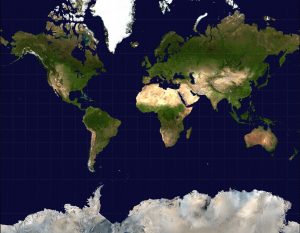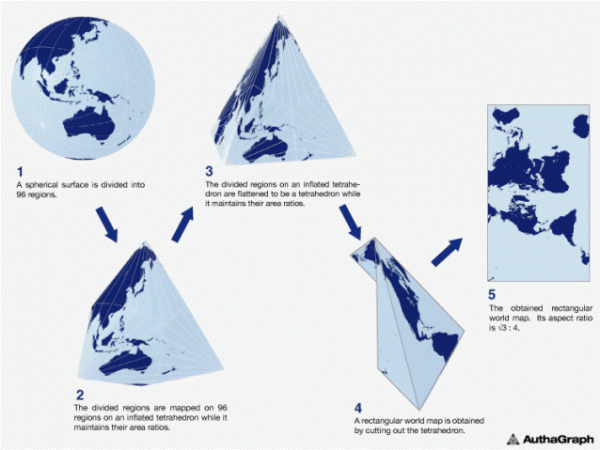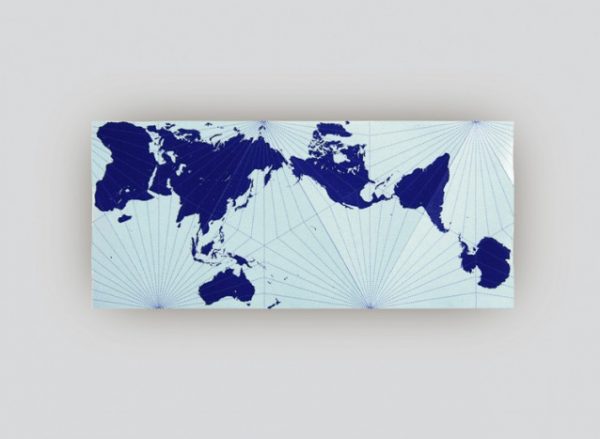It sounds more like an impossible paradox than a design problem: how do we map a spherical world onto a flat surface? Most people are familiar with the Mercator projection, a mapping technique dating back to 1569 on which many maps are still based today.
But that approach developed by Flemish geographer and cartographer Gerardus Mercator has limitations and creates significant distortions. Greenland and Antarctica look huge, for instance, while Africa appears small. This excellent excerpt from The West Wing illustrates some of the many obvious as well as subtle problems inherent in that projection:
Developed by Tokyo architect and artist Hajime Narukawa of the Keio University’s Graduate School of Media and Governance, AuthaGraph represents a novel solution to a centuries-old cartographic dilemma.
The map can be folded and fit into various shapes that simulate the steps of going from spherical globe to flat projection. Its unique geometrical approach reduces distortions but also physically illustrates why they form. Suddenly the world looks different — no longer a series of lined-up continents stretched to fit a vintage vision of the Earth.
AuthoGraph also addresses some of the other issues raised in the West Wing clip above, like: always positioning North America in the upper left quadrant and Europe in the center of the map. While there is no natural ‘upper’ or ‘left’ to any mapping convention, mixing up this default can encourage people to rethink their place in the world.

Earlier this year, the AuthoGraph project won Japan’s Good Design Award, beating out over 1,000 other entries in a variety of categories. Variations on the map, the first iterations of which were developed in 2009, can also be found in Japanese textbooks.
From its creator: “This original mapping method can transfer a spherical surface to a rectangular surface such as a map of the world while maintaining correctly proportions in areas. AuthaGraph faithfully represents all oceans [and] continents including the neglected Antarctica. These fit within a rectangular frame with no interruptions. The map can be tessellated without visible seams. Thus [this] world map provides an advanced precise perspective of our planet.”






Comments (3)
Share
I want a large scale print of that monochromatic map to hang on my wall. Very cool
This seems to be just a more sophisticated version of Buckminster Fuller’s Dymaxion Map from 1943. The unfolding is based on the exact same principle …
http://img.gawkerassets.com/img/18m5buhvg979gjpg/original.jpg
You should have spent 5 minutes talking to a cartographer or at least doing some basic research. Everyone likes to rip on Mercator and any flat map is a compromise. While it’s true that most web maps are mercator, these are frequently viewed at scales which don’t present a problem.
This map isn’t that radically new and it isn’t necessarily more accurate. One benefit of reporting on topics like this is it improves awareness but it’s also important that topics are researched before reported on. This article gives the false impression that there are only a handful of projections and this guy is the first innovator ever.
Personally I prefer a transverse mercator if you want to get away from the typical north/south. One problem with this particular projection is the distortion is not very apparent.